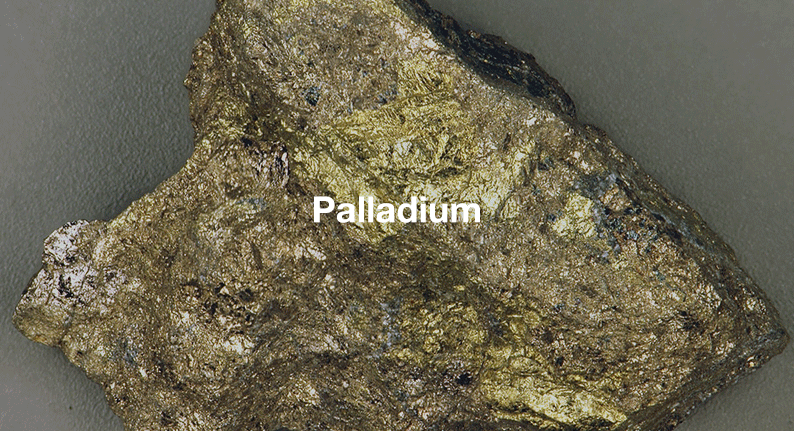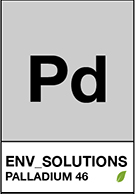Palladium Metal Profile
07 Apr, 2020 8:40 AM / by Quek Leng Chuang

Palladium is another extremely rare precious metal. We harvest this silvery-white metal e.g. from spent industrial catalysts. It is soft and easily malleable. It’s one of the Platinum Group Metals (PGM) we recover at Environmental Solutions (Asia). Here is an outline of the origin and applications of this precious metal.
1. Facts and figures
- Chemical name Pd46
- Also called “white gold” due to its shiny, silvery white colour
- lowest melting point of the materials in the PGM group
- Indians in Ecuador and Columbia already used it to make jewelry
- Palladium is more rare than gold and platinum
- It can absorb hydrogen gas
- Palladium is the least noble of the PGMs as it is the most reactive
- Palladium reacts with oxygen in powder form
- In vitro, a palladium complex was proven to kill tuberculosis and to slow down the HIV-protease
2. Natural occurrence and mining

In earlier times, Palladium was found in river sediments in the Ural, Australia, Ethiopia and America. However, today Palladium is sourced from nickel or copper ore as those sediments are already depleted. Russia and South Africa together produce about 93% of the palladium mined in the world. Most of the Palladium is mined as a byproduct of other metals, e.g. in Nickel mines (49%), platinum mines (41%) and only 10% is supplied from primary mining.
Palladium there is usually found with platinum and other members of the noble metal group. Thus, the mining process is the same as for nickel and copper ore. Palladium’s abundance in the Earth’s crust is estimated to be about 1 to 10 parts per trillion (ppt). This means that it is one of the ten rarest elements found in the Earth’s crust. If gold mining would stop tomorrow, gold supply would still be guaranteed for 25 years. But if the same happened to palladium, supply could only be guaranteed for 1-2 years!
As usage of Palladium is increasing, the price of Palladium soares. During the last five years, it went up continually from 655 $ (January 2015) to 2300 $ (January 2020). Supply is tight due to stricter regulations regarding car exhaust and the need for palladium as a catalyst material. It is likely that prices continue to rise due to the scarcity and the various uses of palladium.
3. Applications
Due to its lower density and cost, Palladium is a common substitute to platinum in the automotive industry. Its main application is the use for various different catalyst types for cars and industrial applications. Due to its ability to absorb high levels of hydrogen gas, palladium is used as a storage medium for it. It also serves its use in new environmentally friendly transport technologies such as fuel cell cars and hybrid cars.
Like platinum, it is malleable and does not rust easily, hence it is often used in jewelry-making. Amongst decorative jewelry, also watches, fountain pens and coins can be produced with Palladium.
Palladium is also traded at the stock exchange (XPD). Investors purchase it physically or via security papers.

4. An Alternative to Mining
Environmental Solutions (Asia) helps companies to turn the cost of managing their waste materials to potential revenue. For more information, please contact us.
Topics: Catalytic Converters, Metal Waste, Reimagining Sustainability
Written by Quek Leng Chuang
LengChuang is a chemical engineer and an expert in carbonomics. He is the founder and owner of Environmental Solutions (Asia) Pte Ltd.
